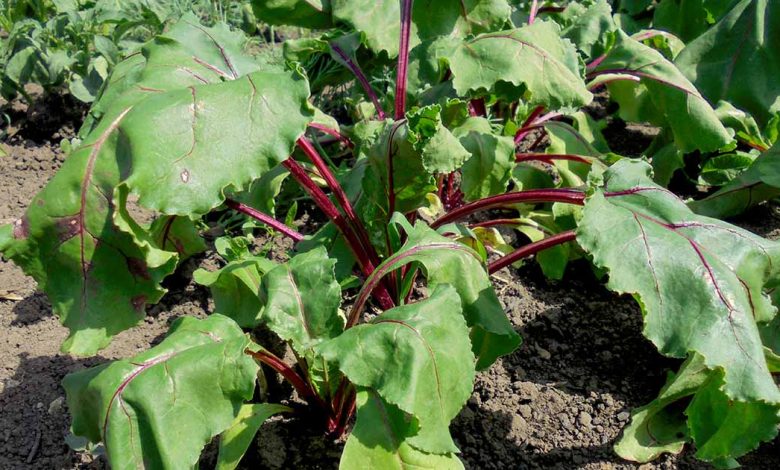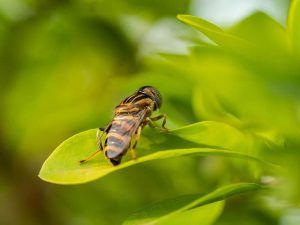Beet Pests and Diseases: [Detection, Causes and Solutions]

 Beetroot is a plant whose large and fleshy root is well known in the culinary world , since it is edible and very delicious.
Beetroot is a plant whose large and fleshy root is well known in the culinary world , since it is edible and very delicious.
It is precisely its very appetizing root that makes it such a cultivated plant around the world.
In addition, it is a good addition to a home grow, since, with good care, it can grow remarkably without problems .
Thinking about it, we can tell you that there are certain problems that can arise during its cultivation, such as pests or diseases.For this reason, we invite you to continue reading so that you know the most important pests and diseases that can occur in beets .
black aphid
Pulgón» src=»https://www.sembrar100.com/wp-content/uploads/Pulgon-negro-300×202.jpg» alt=»<a class=» />Pulgón negro» width=»300″ height =»202″ />The aphid is one of the most common pests in the world and, although it cannot cause serious damage to the plant, it can lower the quality of the product.
However, you should also consider that this pest can transmit the yellowness virus , which can cause serious problems.
At the moment of appearing in the plant, they promote its weakening, as well as the decrease of its vitality, without putting its life at risk.To avoid problems with this pest, it is best to have a good prevention strategy, supervising the crop and its development.
As for its treatment, we can talk about control through the use of a suitable potassium soap, as well as irrigation of the crop with a hose.In the event that the population is too much, it is recommended that you opt for some means of eliminating the pest.
Keep in mind that you can use natural, chemical and even biological remedies, with the incorporation of some predator of the aphid.
beet fly
 Counted as one of the most common beet pests, this fly can even cause the death of the plant if not controlled properly.
Counted as one of the most common beet pests, this fly can even cause the death of the plant if not controlled properly.
In general, it does not usually cause great damage to adult plants, but in its seedlings it reduces the surface of its leaves, hindering photosynthesis.
This has the consequence that the plant does not receive the appropriate nutrition for its development, which can deform it or cause its death.In this sense, it is important to point out that the larvae of this fly pierce the leaves, forming galleries that are very easy to observe.
To combat them, it is best to cut the leaves that are affected by these insects , being careful with the cuts.Similarly, you can choose to remove the larvae manually, pressing both sides of the leaves, until the larvae are crushed.
Chemical products are not recommended in this case , although they can certainly have good effectiveness in their final control.
gray worm
 With a high possibility of causing the death of the plant , the gray bollworm is considered a dangerous pest for beet crops.
With a high possibility of causing the death of the plant , the gray bollworm is considered a dangerous pest for beet crops.
This is because their larvae feed especially on the neck of the plant, leaving almost circular bites in that area.
This can well cost the lives of smaller plants quickly, while the adults can handle it a little better.
The first symptoms of this plague is that the plants become wilted relatively quickly , especially if it is a severe infestation.The best thing for the plants is that they are diagnosed early and treated promptly.
At this point, there are some biological remedies such as the use of Bacillus bacteria , which is effective in controlling different types of caterpillars.On the other hand, the use of chemical products such as insecticides is recommended in severe cases and in hours that are not in intense sunlight.
Virous yellowness
 This is a disease that is transmitted by the population of aphids that can attack beet plants during the spring.
This is a disease that is transmitted by the population of aphids that can attack beet plants during the spring.
There are several different types of virous yellowness , so young and mature plants can be compromised to the same extent.
Its main symptom is the presence of chlorosis in the leaves of the affected plants , taking into account that they may have other signs.
The leaves tend to thicken and become brittle , so many end up falling off and leaving the plant looking less than vital.It is a disease of rapid spread and quite harmful effects, being necessary to follow the necessary prevention measures.
This virus does not have a biological or chemical treatment that has proven its effectiveness .For this reason, it becomes difficult to save the affected plants.Therefore, it is necessary that you maintain absolute control against carriers of the virus, reducing the risk of the disease occurring.
Leprosy
 This disease is caused by a fungus that can visibly damage the leaves of the plant.
This disease is caused by a fungus that can visibly damage the leaves of the plant.
On them, mostly deformed, you can see thick spherical gills , which usually maintain a reddish color around them.
This disease has no direct impact on the economic losses that beet crops can present.This is because, as a general rule, it does not spread quickly and does not usually cause damage to the quality of the root.
In severe cases, it can produce tumors in the root, some larger than the root and leaving it marked in an unaesthetic way. The use of chemical products is what is recommended in its treatment , although the best thing is active prevention to avoid its use.
Beetroot is one of the tastiest roots and is used around the world to cook some of the most exquisite dishes.Although its name may vary from one region to another, the beet maintains its characteristic color and sweet flavor , which adds followers day by day.
For this reason, it is best that the people who are dedicated to planting and growing them keep their plants as healthy as possible.This helps to avoid problems with its consumption, as well as reducing economic losses due to the presence of pests and diseases .

![Photo of Ponds in the Garden: [Advantages, Construction and Decoration]](https://www.complete-gardening.com/wp-content/uploads/2022/08/ponds-in-the-garden-advantages-construction-and-decoration-390x220.jpg)

![Photo of Dimorfoteca: [Cultivation, Irrigation, Care, Pests and Diseases]](https://www.complete-gardening.com/wp-content/uploads/2022/08/dimorfoteca-cultivation-irrigation-care-pests-and-diseases-390x220.jpg)
![Photo of Dipladenia: [Cultivation, Irrigation, Care, Pests and Diseases]](https://www.complete-gardening.com/wp-content/uploads/2022/08/dipladenia-cultivation-irrigation-care-pests-and-diseases-390x220.jpg)